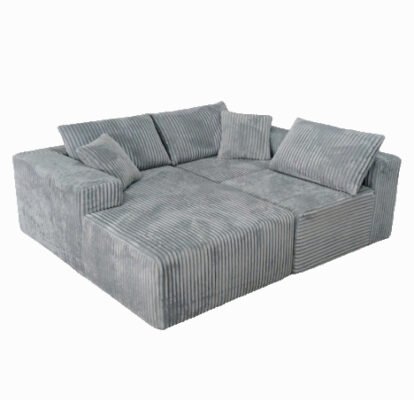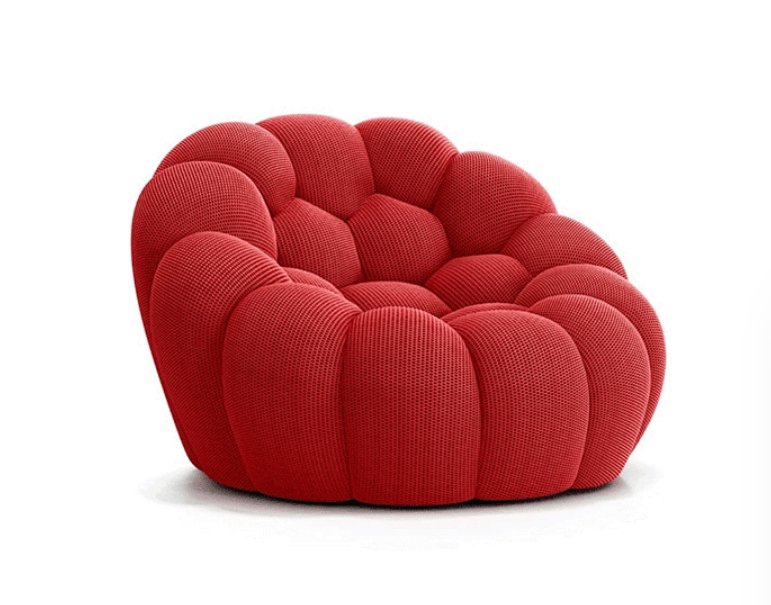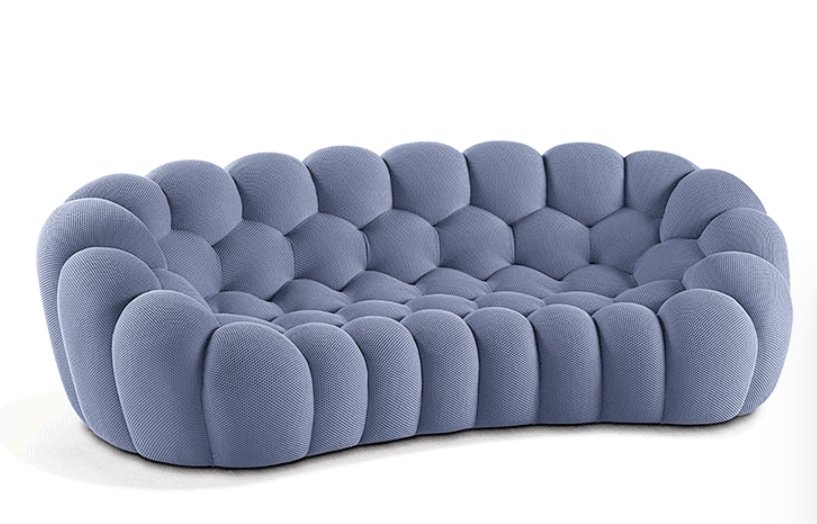Compressed sofas represent a modern evolution in furniture design, combining convenience, style, and comfort in ways that traditional sofa beds often struggle to match. As a compressed sofa factory specializing in modular, space-saving solutions (https://modular-sofas.com/), we understand that comfort remains paramount for customers considering convertible seating options. This comprehensive article explores why compressed sofas provide a superior comfort experience compared to traditional sofa beds, examining aspects of design, ergonomics, materials, and usability.
The article will include a detailed comparison table to highlight key factors influencing comfort, durability, and function. It is structured to provide a deep dive into the features that make compressed sofas a preferred choice, grounded in industry expertise and user-centered design principles.

Understanding Compressed Sofas and Traditional Sofa Beds
To appreciate why compressed sofas feel more comfortable, it is important to first define and differentiate the two types of furniture.

Compressed Sofas are modular sofas that come tightly packed or folded to minimize shipping and storage volume. Once unpacked, they expand to their intended size and shape. They typically use advanced foam technology, flexible frames, and tailored cover fabrics designed for easy maintenance and durability. The modular nature allows customization in seating depth, cushions, and configuration.

Traditional Sofa Beds usually combine a standard sofa frame with a mechanism that unfolds into a flat sleeping surface. These often involve metal frames, mattress sections, and hinges, which have historically compromised seating comfort and made transition cumbersome.
Key Comfort Advantages of Compressed Sofas
The superior comfort of compressed sofas arises from several design and material innovations, which address common complaints associated with traditional sofa beds.


1. Ergonomic Seating and Support
Compressed sofas are engineered with ergonomics as a priority:
- Optimized Cushion Density and Layering: Multiple layers of high-resilience foam, memory foam, or latex provide a balance of softness and support. Unlike traditional sofa beds, which often rely on thin mattress pads over frames, compressed sofas deliver consistent comfort for sitting and sleeping.
- Tailored Backrest and Arm Support: Modular components allow backrests and armrests to be positioned for improved lumbar support and relaxed posture.
- Height and Depth Customization: Compressed sofas are designed to fit varying body types and living space requirements, whereas sofa beds have one-size-fits-all seating depths and heights, sometimes causing discomfort over prolonged use.
2. Seamless Transformation Between Sofa and Bed
Traditional sofa beds can feel awkward or rigid when converted, with metal frames and folded mattresses creating uneven surfaces. Compressed sofas employ flexible materials and modular cushions to transform smoothly and maintain comfort in both modes without sacrificing softness or stability.
3. Superior Materials and Construction
- Advanced Foam and Fabric Technology: Compressed sofas utilize breathable, high-density foams that retain shape and resist sagging. Their covers often include stretchable, washable fabrics designed to feel soft and reduce friction.
- Robust Frames with Flexibility: Unlike rigid metal frames in sofa beds, compressed sofas use lightweight yet durable frames (often wood or engineered materials) combined with flexible support systems that absorb movement and improve comfort.
4. Heat and Moisture Management
Fabric and foam choices in compressed sofas promote air circulation, reducing heat build-up and moisture retention common in sofa beds with mattress sections. This results in a cooler, more comfortable seating experience, especially in warmer environments.


5. Aesthetic and Functional Versatility
Because compressed sofas are modular, they can be arranged to suit room layout and personal comfort preferences. Traditional sofa beds are limited by mechanical constraints and usually cannot be reconfigured for optimal ergonomic effect.
The Role of a Compressed Sofa Factory in Delivering Comfort
At a specialized compressed sofa factory such as ours (https://modular-sofas.com/), continuous research and development focus on improving each element:
- Foam materials are sourced for ideal density and resilience.
- Fabrics are tested for durability, stretch, and tactile comfort.
- Frame designs evolve to support ergonomic customization.
- Cover tailoring ensures ease of cleaning without sacrificing softness.
Our expertise ensures that every compressed sofa not only meets aesthetic standards but also delivers unmatched comfort.
Comparison Table: Comfort Factors between Compressed Sofas and Traditional Sofa Beds
| Comfort Factor | Compressed Sofas | Traditional Sofa Beds |
|---|---|---|
| Cushion Comfort | Multi-layer foam, memory foam options; uniform softness and support | Thin mattress pads over metal frames; uneven surface |
| Ergonomic Design | Modular components with customizable seating depth and back support | Fixed seat depth; limited backrest angles |
| Transformation Ease | Smooth, flexible conversion without rigid parts | Metal frames and hinges cause rigidity and awkward folds |
| Heat & Moisture Management | Breathable fabrics and foams promote air circulation | Mattress pads retain heat and moisture, less breathable |
| Durability of Materials | High-density foam, engineered frames, durable stretch fabrics | Wear on mattress and mechanism can cause sagging and discomfort |
| Maintenance | Removable, washable covers designed for easy care | Often difficult to clean mattress and metal parts |
| Aesthetic Flexibility | Modular design allows multiple configurations | Limited by fixed frame and mattress size |
| Weight and Mobility | Lightweight components facilitate moving and rearranging | Heavy metal frames are cumbersome |
In-Depth Analysis of Comfort Elements
Cushion Quality and Support
The foam layers in compressed sofas vary in density and firmness, often combining core supportive foam with a softer top layer. This contrasts with traditional sofa beds where mattress thickness is minimal, and cushioning quality depends largely on the mattress rather than the sofa seat.
Ergonomics and Modularity
Because compressed sofas are designed to be modular, pieces can be rearranged to optimize comfort zones. For example, a corner seat might be deeper for lounging, while others support upright seating. This customization is almost impossible with traditional sofa beds, which rely on one mechanical design.
Conversion Experience
Traditional sofa beds require lifting, pulling, or unfolding heavy metal parts, often causing discomfort or injury risks. Compressed sofas rely on cushion repositioning or minimal unfolding, preserving comfort throughout.


Fabric and Foam Breathability
Compressed sofa materials are crafted for ventilation, reducing heat buildup—a common problem in sofa beds with foam mattresses covered by synthetic fabrics that trap warmth.
User Lifestyle and Space Considerations
Compressed sofas appeal particularly to urban dwellers with limited space who require multi-functionality without sacrificing comfort. They suit:
- Frequent users who convert sofas daily
- Households valuing easy maintenance
- Those who prioritize design flexibility and ergonomic comfort
Traditional sofa beds may suit occasional overnight guests but can become uncomfortable for regular use.
Future Trends in Sofa Comfort
As material sciences advance, new foam blends, breathable fabrics, and lightweight frame technologies will continue to push compressed sofa comfort forward, while traditional sofa bed designs remain relatively static and mechanical in function.
Conclusion
Compressed sofas feel more comfortable than traditional sofa beds due to superior ergonomic design, advanced materials, smooth transformation mechanisms, and enhanced breathability. Their modularity allows personalization that improves daily comfort and makes them well-suited for modern, space-conscious lifestyles.
Choosing a compressed sofa from a specialized factory not only guarantees optimized comfort but also offers durability and design flexibility, ensuring a long-lasting, pleasant seating and sleeping experience.